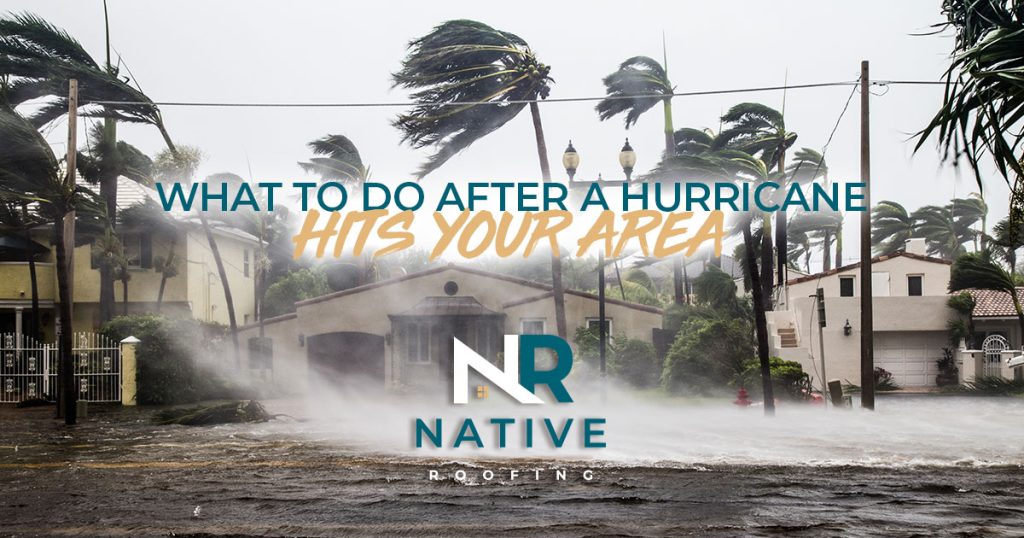A hurricane has hit your area, causing damages to your home, property, or the surrounding areas – now what? After a hurricane’s wrath, it’s important to know how to remedy the situation. This comprehensive guide will walk you through all the steps to ensure that you are safe, and your property protected.
What to do After a Hurricane Hits Your Area
- Continue listening to the NOAA Weather Radio or the local news for the latest updates and adhere to safety advisories communicated by local officials.
- If you evacuated, return home only when officials say it is safe. Once home, drive only if necessary and avoid flooded roads and washed-out bridges. If you must leave your home, watch for down electrical wires, debris in the road, and structural damage to the roadways and sidewalks.
- Assess the damages to your property and home. Carefully inspect your property for any downed trees or power lines, gas leaks, as well as any damages to your home or other structures on your property such as a storage shed, barn, etc. Should you find anything that could be dangerous, keep your distance and contact the proper authorities such as your power company or the county or city for example. Stay out of your home or any building if you smell gas, if floodwaters remain around the building or if your home or the building was damaged by fire.
- Cover any broken windows with plywood or plastic sheeting, and if you have a damaged roof, cover it with a tarp for temporary protection. Ensure no sunlight is peaking through your roof and walls to prevent additional water damage from future rainstorms and the possibility of animals entering your home.
- Address any flood damage immediately. Remove any wet carpet or furniture, and if possible, put it outside to dry in the sun. If you have any electronics damaged by the flood, do not try to turn them on – take them to a professional for assessment.
- Use battery-powered flashlights instead of candles. Turn on your flashlight before entering a vacated building, as the battery could produce a spark, igniting leaking gas, if present.
- After you’ve handled the immediate post-hurricane to-do’s, make preparations for permanent repairs and rebuilding. Here’s a shortlist of who you might need to contact:
- Insurance Company – One of your first calls after a hurricane should be to your homeowner’s insurance company to review any damages. They may ask you to submit pictures of damages, send a claims adjuster to your home, or both. A flood insurance claim will be handled similarly as well.The National Flood Insurance Program (NFIP) managed by FEMA has flood insurance available to anyone living in one of the 23,000 participating NFIP communities. According to the FEMA website, “Homes and businesses in high-risk flood areas with mortgages from government-backed lenders are required to have flood insurance.
- Roofing Company & General Contractor – Reach out to a reputable, licensed, and insured roofing company and general contractor in your area for estimates. If you’re local to South Florida, rely on the Native Roofing team to fix your hurricane roof damage. Together, these two companies will reproduce a safe dwelling place for you and your family.
- Tree Service – If the storm took down large trees, it’s best to have a licensed and insured tree service cut the tree into smaller pieces for disposal or your personal use.
- Safely Utilize a Portable Generator – Before using a portable generator during an extended power outage, it’s critical to know how to correctly operate it to avoid potential carbon monoxide (CO) poisoning. Did you know carbon monoxide poisoning is one of the leading causes of death after storms in areas experiencing power outages? Carbon monoxide poisoning, electrocution, and fire are all potentially fatal risks of misusing portable generators. NEVER operate a portable generator inside your home, garage, or basement. For proper ventilation, the Occupational Safety and Health Administration (OSHA) recommends placing the generator in an area where it has 3 to 4 feet of clear space on all sides. It should also be at least 30 feet away from the house while it’s running, operated in dry areas, and kept away from windows, doors, and any other openings into the home. As wind can blow the odorless, colorless, and tasteless gas indoors, 15 feet is too close to the home. Review generator safety here and know the symptoms of carbon monoxide poisoning including dizziness, blurred vision, loss of consciousness, shortness of breath, and nausea and vomiting, according to the Mayo Clinic.
With Hurricane Preparedness Week taking place now, May 1st to May 7th, bookmark the link above as a valuable resource to knowing what to do before, during, and after a hurricane.
In South Florida, we’re accustomed to back-to-back hurricane threats, so don’t delay your hurricane roof repairs. We’ve said it before…Your roof is your home’s TOP defense against staying safe against life-threatening weather such as hurricane-force winds and rain.
Should your South Florida home experience hurricane roof damage at any point this 2022 hurricane season, contact Native Roofing to request your free roofing estimate. In business for 25 years, we’ll have your roof repaired in no time. Visit our website or call us at 954-236-9986 for more information on our experience, services, and how we can help.


